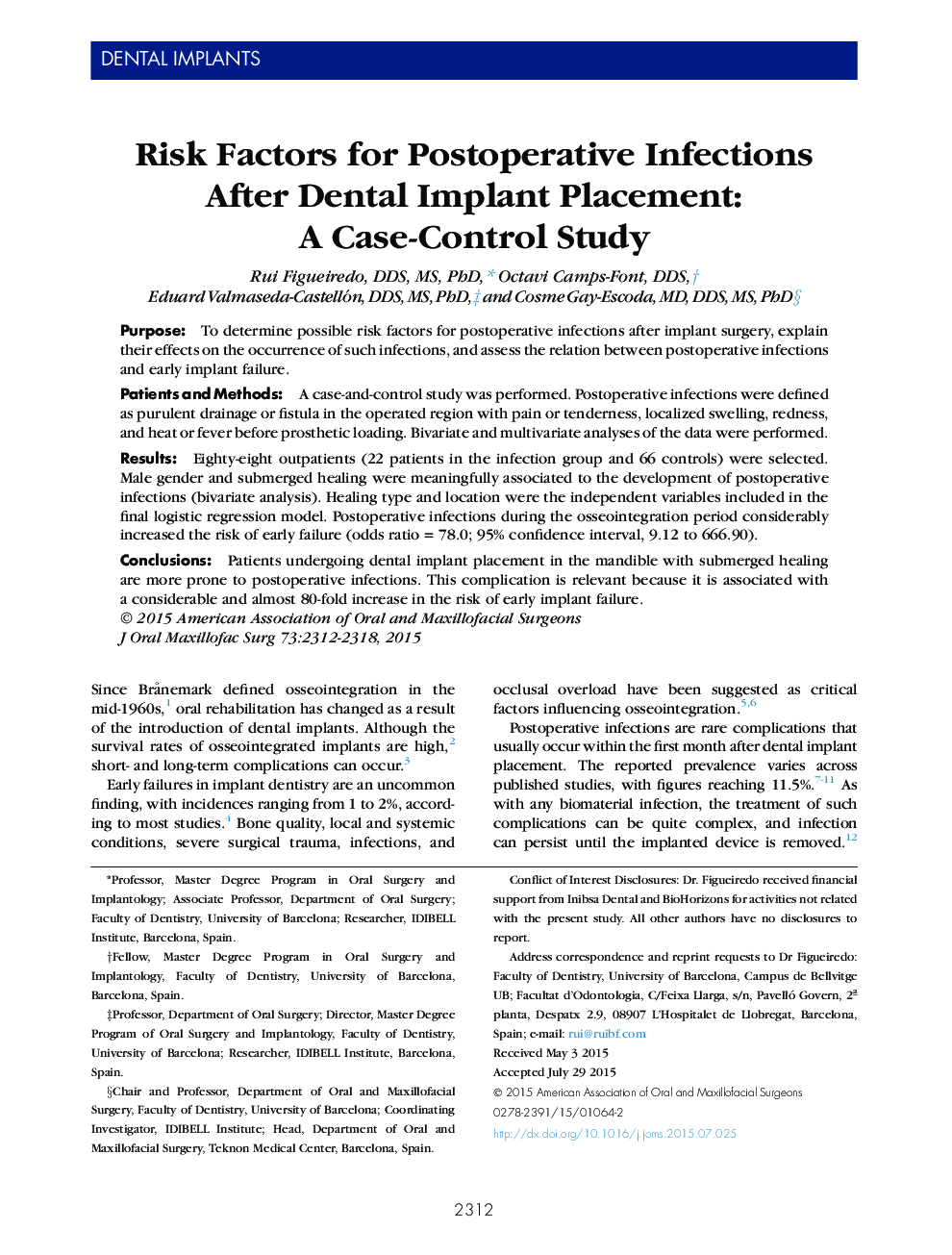| Article ID | Journal | Published Year | Pages | File Type |
|---|---|---|---|---|
| 3153002 | Journal of Oral and Maxillofacial Surgery | 2015 | 7 Pages |
PurposeTo determine possible risk factors for postoperative infections after implant surgery, explain their effects on the occurrence of such infections, and assess the relation between postoperative infections and early implant failure.Patients and MethodsA case-and-control study was performed. Postoperative infections were defined as purulent drainage or fistula in the operated region with pain or tenderness, localized swelling, redness, and heat or fever before prosthetic loading. Bivariate and multivariate analyses of the data were performed.ResultsEighty-eight outpatients (22 patients in the infection group and 66 controls) were selected. Male gender and submerged healing were meaningfully associated to the development of postoperative infections (bivariate analysis). Healing type and location were the independent variables included in the final logistic regression model. Postoperative infections during the osseointegration period considerably increased the risk of early failure (odds ratio = 78.0; 95% confidence interval, 9.12 to 666.90).ConclusionsPatients undergoing dental implant placement in the mandible with submerged healing are more prone to postoperative infections. This complication is relevant because it is associated with a considerable and almost 80-fold increase in the risk of early implant failure.
